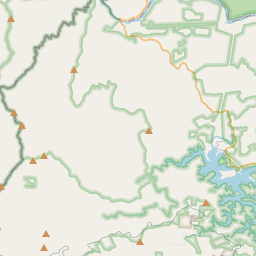Civil War in Graham County
Historical marker location:






Union and Confederate Raiders
April 12, 1861: The Civil War begins with the Confederate attack on Fort Sumter, located in South Carolina's Charleston Harbor.
April 15, 1861: President Abraham Lincoln issues a call for 75,000 volunteers to serve in the Union Army to suppress the rebellion.
May 24, 1861: The first major land battle, known as the First Battle of Bull Run (or First Battle of Manassas), takes place in Virginia. It ends in Confederate victory.
September 17, 1862: The Battle of Antietam in Maryland becomes the bloodiest single-day battle in American history, with heavy casualties on both sides. The Union forces, commanded by General George McClellan, manage to halt Confederate General Robert E. Lee's advance into Union territory.
January 1, 1863: President Lincoln issues the Emancipation Proclamation, declaring that all slaves in Confederate-held territories are to be set free. However, the proclamation does not immediately free all slaves in the United States.
July 1-3, 1863: The Battle of Gettysburg in Pennsylvania takes place, resulting in a significant Union victory and inflicting heavy casualties on Confederate forces. It marks a turning point in the war.
November 19, 1863: President Lincoln delivers the Gettysburg Address, emphasizing the principles of liberty, equality, and the preservation of the Union.
April 9, 1865: General Robert E. Lee surrenders to Union General Ulysses S. Grant at Appomattox Court House in Virginia, effectively ending the Civil War.
April 14, 1865: President Lincoln is assassinated by John Wilkes Booth while attending a play at Ford's Theatre in Washington, D.C.
May 10, 1865: Confederate President Jefferson Davis is captured, signaling the collapse of the Confederate government.
December 6, 1865: The Thirteenth Amendment to the United States Constitution is ratified, officially abolishing slavery throughout the country.
While this timeline provides an overview of key events, it is important to note that the Civil War spanned over four years, from 1861 to 1865, and encompassed numerous battles, campaigns, and political developments that shaped the course of American history.
In the early 1900s, North Carolina was home to a thriving film industry, centered in the town of Wilmington. Many early silent films were shot in the state.
In 1808, Graham County was established and named in honor of William A. Graham, a United States senator from North Carolina. The county experienced slow growth in its early years, with primarily subsistence farming and small-scale industry driving the economy. However, the construction of the Cheoah Dam in the early 20th century brought significant change to the region.
The completion of Cheoah Dam in 1919, as part of a hydroelectric power project, led to the creation of Fontana Lake and the subsequent flooding of several communities, including the town of Judson. The construction of the dam also brought in a large influx of workers and their families. The newly created lake became a popular tourist destination, attracting visitors for fishing, boating, and hiking.
Graham County has a long-standing connection with the Great Smoky Mountains National Park, as a significant portion of the park resides within its borders. Many residents of Graham County were displaced when the park was established in the 1930s, but the tourism industry that developed around the park brought new economic opportunities. Today, Graham County remains a picturesque destination, known for its natural beauty, outdoor recreational activities, and a rich cultural heritage that blends Native American and Appalachian traditions.
Graham County Timeline
This timeline provides a concise overview of the key events in the history of Graham County, North Carolina.
- 1808 - Graham County is established as an independent county.
- 1830s-1860s - European settlers begin to move into the area, primarily from Scotland and Ireland.
- 1861-1865 - Graham County residents participate in the American Civil War, with some joining the Confederate forces.
- 1872 - Robbinsville is established as the county seat.
- 1890s - Graham County becomes home to numerous lumber and mining operations, contributing to its economic development.
- 1915 - Fontana Dam is completed, creating Fontana Lake and providing a source of hydroelectric power.
- 1941-1945 - Construction begins on Fontana Dam as part of the war effort during World War II.
- 1942-1943 - The town of Fontana Village is built to house workers on the dam project.
- 1944 - Fontana Dam is completed, becoming the tallest dam east of the Mississippi River at the time.
- 1960s-1970s - The development of the Great Smoky Mountains National Park and the Nantahala National Forest brings increased tourism to Graham County.
- 1983 - The Appalachian Trail is rerouted through Graham County, boosting outdoor recreation and tourism.
- 2002 - The Cherokee Indian Reservation, located adjacent to Graham County, expands its boundary.